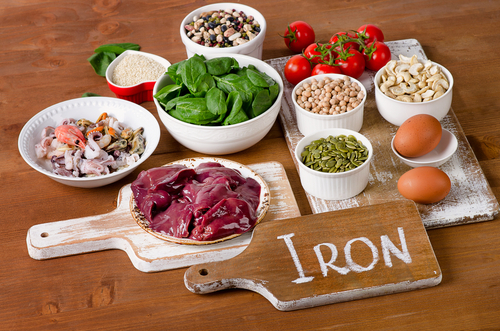Are you getting enough iron?
Iron deficiency is rampant particularly for females, and is one of the most common nutrient deficiencies in North America.
Adult men need about 8 mg per day and adult women need about 18 mg per day up to the age of 50.
Signs of iron deficiency include:
- fatigue
- confusion
- anxiety
- bruising
- hair loss
- inflamed tongue
- decreased work and school performance
- slow cognitive and social development
- difficulty maintaining body temperature
- decreased immune function
Most at Risk of Deficiency:
High-risk groups include pregnant and breastfeeding women, menstruating women, babies and toddlers, teenage girls and female athletes.
Types of Iron:
- Heme iron comes from animal sources and is most easily absorbed by the body.
- Non-heme iron is found in plant sources, such as vegetables, cereals and legumes. It is not as easily absorbed as heme iron. Early studies on spinach suggested oxalates hinder iron absorption, but more recent studies suggest that absorption is not significantly impacted by the oxalates contained in greens. Jury may still be out on this, but from my experience with clients, I have witnessed non-meat eaters increase iron levels by increasing greens in their diet.
Absorption tips:
Pair iron rich foods with vitamin C rich foods to increase absorption and avoid eating it with calcium rich foods, eggs, coffee, and tea.



